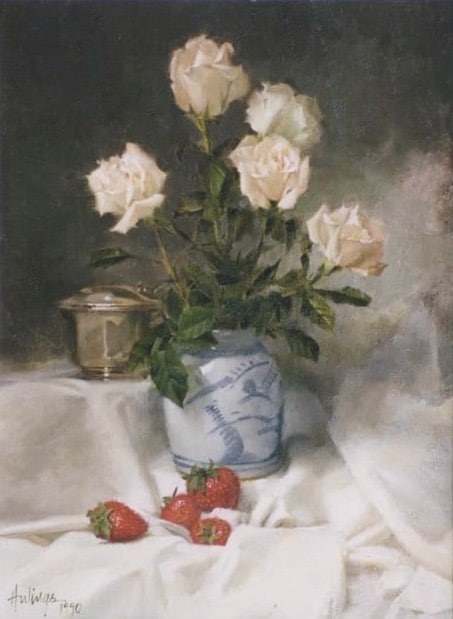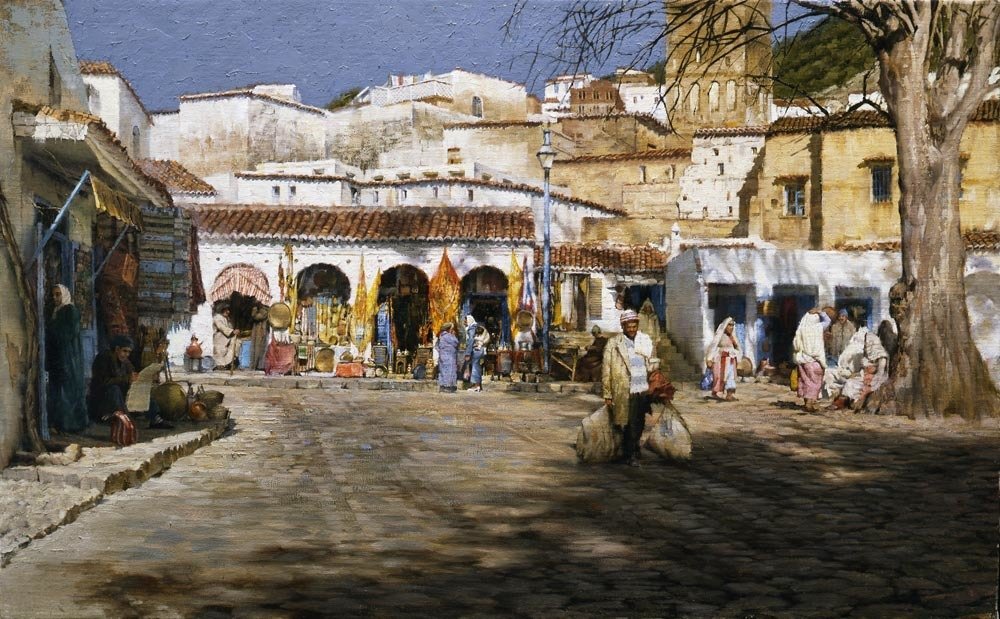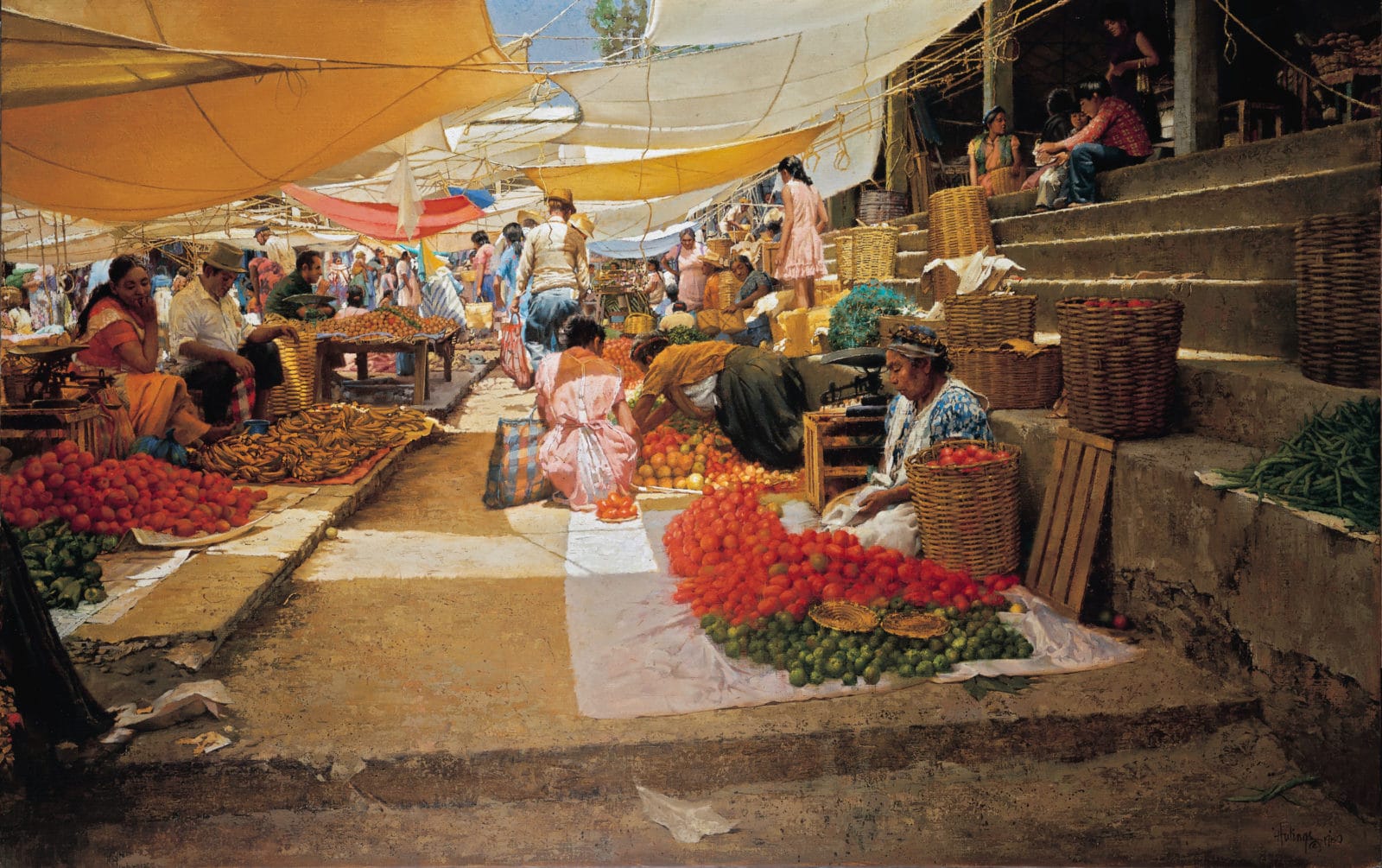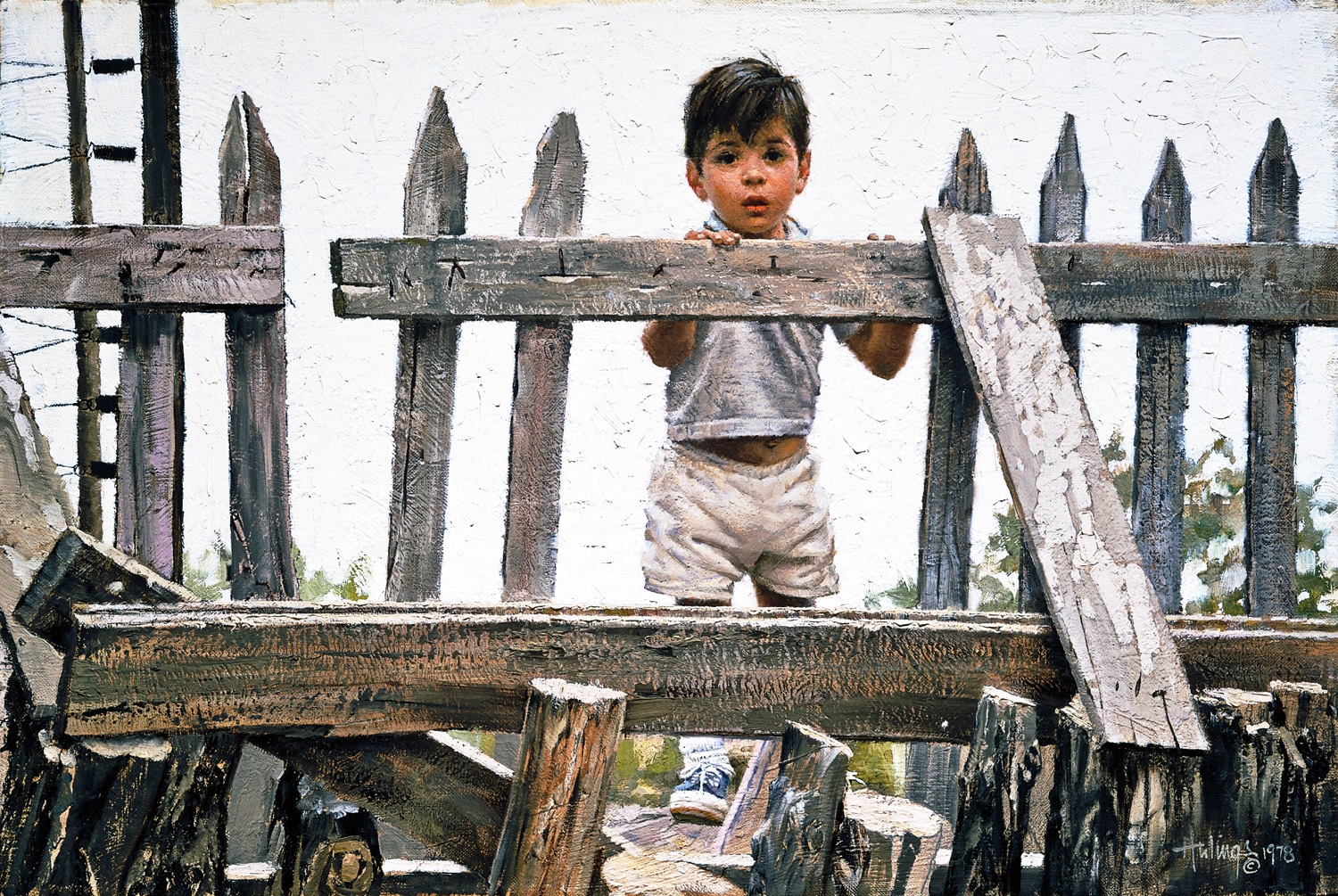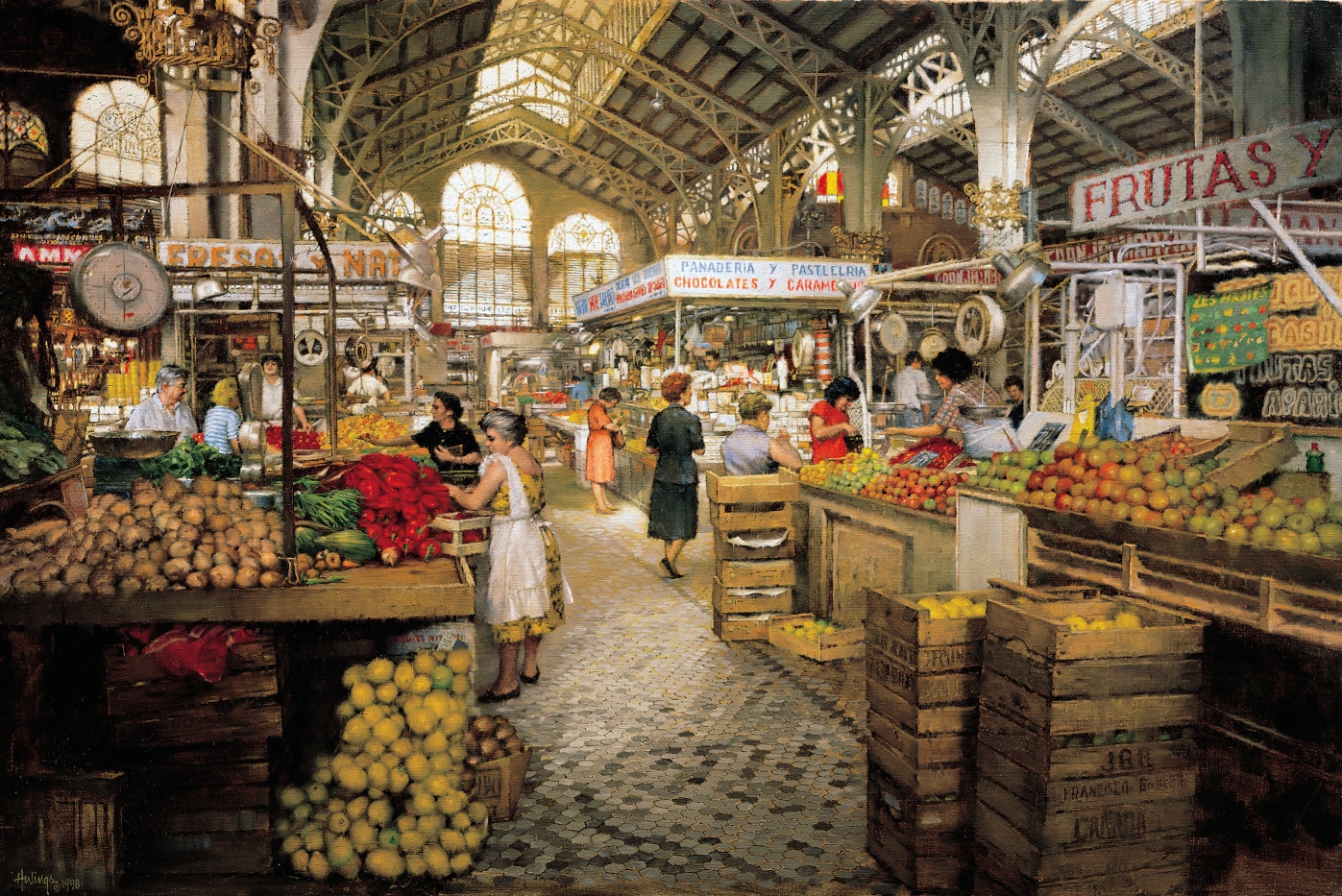“A Hulings still life is always dynamic and full of movement, even if the overall effect is a calming one.”
In the midst of so much rapid and unexpected change, stillness can be a beautiful thing. As we listen to our doctors and public health officials and take all necessary practical measures to stay well or get well, we benefit from taking time for moments of inspiration and beauty. Artists have long provided us with sustenance for the soul—and Hulings’ still life work, especially his roses, are full of quiet sophistication and tranquility. Fragile, yet powerful.
Full Circle
Still Life with Chinese Jar is a 12 x 18″ and painted in 1990. That was the same year Hulings won The Red Smith Artists’ Choice Award at The National Wildlife Museum in Jackson, Wyoming. This painting is confidently composed close to the center-line of the canvas, making the composition feel grounded and even. A Hulings still life is always dynamic and full of movement, even if the overall effect is a calming one, and this is no exception. There’s a circle created between the roses at the top and the strawberries at the bottom. The deep green leaves on both the fruit and the flowers are shown in vivid detail, pointing in all directions. Both vessels shine where the light source hits them—with the Chinese Jar’s blue painted decoration echoing the every-which-way of the leaves. The background cloth shows folds and complexity, and on the right side of the frame, Hulings plays with some abstraction.
Stop And Smell the Roses
Hulings had a special finesse with roses, using nuanced color values to show delicacy in the patterns of the petals, and showing his command of light. Strategically-placed sharp and soft edges keep our eyes moving. He’s darkened the background behind the roses to a deep gray-green so that the flowers really pop.
Golden Age
Painter Johannes Vermeer (1632-1675) set the bar with his mastery of light, and was a major influence for Hulings. For those of who don’t already have them represented in your art library (and we know many of you do!), Vermeer and his Dutch Golden Age colleagues’ still life works are worth your internet or art-history book research. You’ll see a similar exploration of subject, composition, and light. The Dutch painters seem inordinately fond of cheese in their domestic scenes, which makes sense, given that it’s a staple in a European fridge and often a main part of breakfast and lunch.
These Roses Have Been Collected!
Update: this work is one of a series of Hulings paintings that was featured at the Scottsdale Art Auction in 2020 and had a successful sale! Sending our congratulations to the lucky new owners of this beautiful work.

